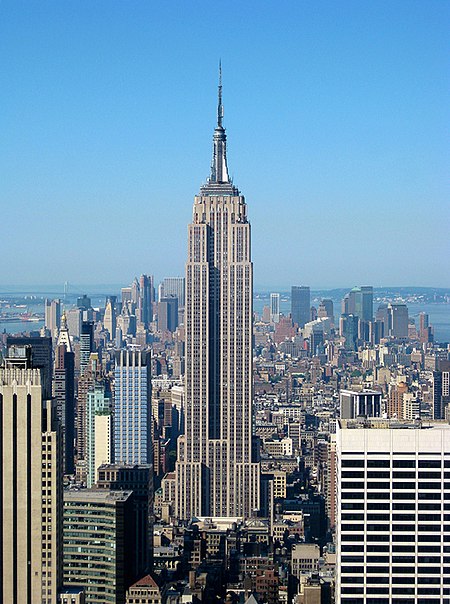
Posted on 03/05/2013 7:49:14 AM PST by SeekAndFind
When progressives talk of government, it is in an alluring can-do spirit. Making the case for more spending, President Barack Obama invokes the 19th century as a heroic age that built government-supported railroads. MSNBC hosts pose in front of monumental 20th-century public-works projects and speak of what all of us can do together.
This is all well and good as nostalgia, but is utterly detached from the spirit and the practices of 21st-century government. We don’t excel at building things. We excel at studying things, and putting up obstacles to building them. We delay, cavil, and sue. We protest and micromanage. It is not the age of the engineer but of the bureaucrat, the lawyer, and the environmental activist.
Consider the proposed Keystone pipeline to connect the tar sands of Alberta, Canada, with the Gulf Coast. The Obama administration has been happy to keep the nation’s foremost shovel-ready project in a state of suspended animation for years so it can be constantly studied toward no end whatsoever except placating people with a theological objection to pipelines.
For a taste of the 21st-century American attitude toward building things, I direct your attention to Volume 2 — not Volume 1, 3, or 4 — of the Draft Supplemental Environmental Impact Statement, not to be confused with the three prior environmental studies, including one in August 2011 that was erroneously called the Final Environmental Impact Statement.
Therein is a section considering the pipeline’s impact on endangered and potentially endangered animals and plants. It evaluates the effect on everything from the Sprague’s Pipit to the blowout penstemon, although special attention is devoted to the American burying beetle. Just like your congressman, the beetle is a “federally protected invertebrate.”
It lives in a handful of counties to be traversed by the pipeline in Nebraska and South Dakota. Its habitat could be disrupted. It could be hit by trucks. If the pipeline heats the ground, beetles burrowed into the soil for the winter could be fooled into emerging prematurely. Artificial lighting could expose it to increased predation.
Not to worry. Keystone has been in discussions with federal and state officials about minimizing the impact. Prior to construction, the beetles should be trapped and relocated, in keeping, of course, with the Nebraska American Burying Beetle Trapping Protocol. But not in South Dakota. “Trapping and relocating American burying beetles,” the statement explains, “is not authorized in South Dakota.”
Vegetation should be mowed to no more than eight inches tall to render the affected areas temporarily unsuitable to the beetles. Carcasses should be removed, lest beetles return to eat. Lighting should be shielded to avoid attracting beetles. Signs at access points to the project should be identified as American-burying-beetle habitat. All workers should be trained in beetle protection and issued “a full color Endangered Species Card, which includes a picture of the American burying beetle and a summary of relevant conservation information.”
This is the case of only one insect glancingly affected by one project, but it stands for an epoch of red tape and hostility to development.
Keystone’s real problem is that it has run afoul of environmental activists who believe that if they can stop it, they will prevent Canada from utilizing its so-called tar sands and therefore save the plant from more carbon emissions. But Canada is going to make the most of the stupendous resource represented by the tar sands regardless. The latest environmental statement says the project will cause “no substantial change in global greenhouse emissions.”
The betting now is that Obama administration will eventually greenlight the pipeline. If it does get built, it probably won’t be in operation until 2016, when the original completion date was 2012. Reuters columnist Robert Campbell points out that Keystone is on pace to equal or surpass the Trans-Alaska pipeline in its slow pace of construction, even though the Alaska project was a much more complicated proposition. We get ever more adept at the perverse art of not building things.
— Rich Lowry is the editor of National Review.

Ahhh yez, the Alaskan Pipeline. How well I remember the Japanese pipe setting and rusting in the winter snow while politicians fought to divide the spoils.

This country is crisscrossed with oil pipelines that have been in the ground for decades including South Dakota the habitat of the burying beetles. Guess what... the little critters are not extinct despite no precautions being taken to protect them from the pipelines for all these years. I remember the same environmental idiocy about how the Alaska pipeline was going to turn the state into an oil soaked moonscape and kill all the caribou. Forty years later nothing of the kind has happened and there are enough caribou to allow Sarah Palin to hunt them.
The U.S. Army installation, Fort Irwin, CA is located approximately 37 miles from I-15 in the Mojave Desert. The entire distance is nearly devoid of anything but sand and rocks...and a fence on each side which a person of average height can step over. Why only two feet or less for this taxpayer funded joke? Because the Desert Tortoises can’t jump two feet. So when it comes to taxpayers (other peoples) dollars, money is no object.
So true...
And so sad...
From what I’ve read, some exposed sections of the Alaskan Pipeline act like something of a radiator and warm the air around it, where the caribou actually gather.
Disclaimer: Opinions posted on Free Republic are those of the individual posters and do not necessarily represent the opinion of Free Republic or its management. All materials posted herein are protected by copyright law and the exemption for fair use of copyrighted works.